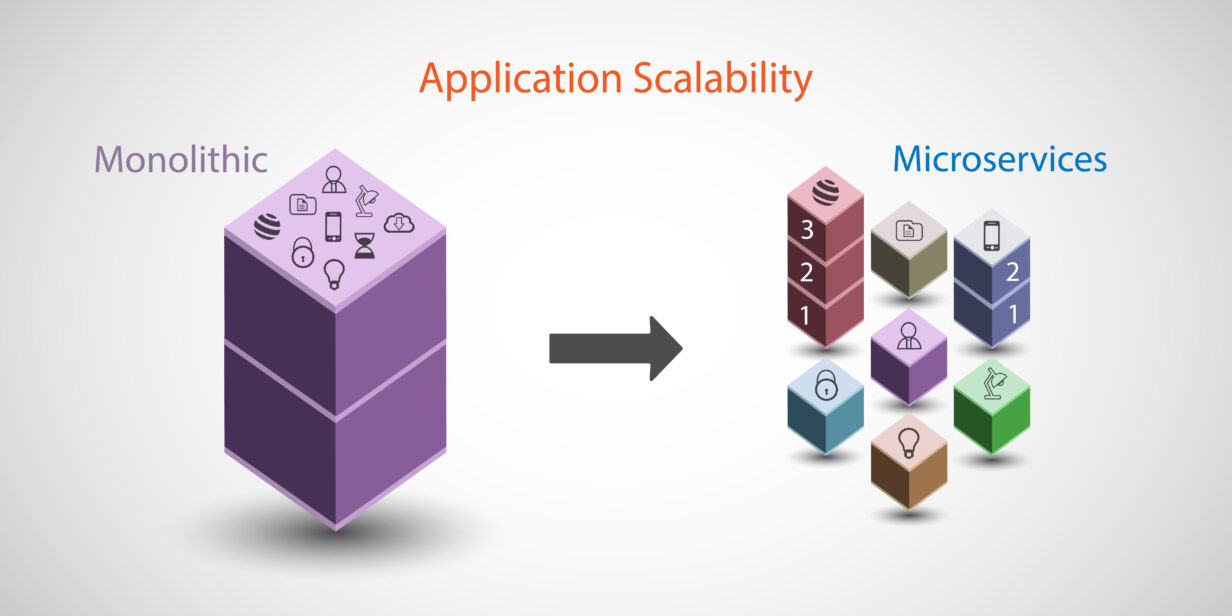
In recent years, the world of software development has seen a significant shift in how applications are designed and built. Monoliths, once the go-to approach for building software, are being replaced by microservices. As a lead software engineer, I’ve witnessed the benefits of this transition firsthand. In this blog article, I will discuss the differences between monoliths and microservices and explain why microservices are the ideal choice for modern software projects.
What are Monoliths?
Monolithic architecture is a traditional approach to software development where all components of an application are combined into a single codebase. This unified system handles all the functionality of the application, from user interface and business logic to data storage and processing. While monoliths are relatively simple to build and maintain, they can become a challenge as the application grows in size and complexity.
Drawbacks of Monolithic Architecture
- Scalability: Monolithic applications do not scale well, as any change in the application requires redeploying the entire system. This makes it difficult to handle increased load or to expand the application’s features.
- Maintenance: As the codebase grows, it becomes harder to manage and maintain. This results in longer development cycles and increased potential for bugs.
- Limited Flexibility: Since all components are tightly coupled, it’s difficult to make changes to one part of the application without affecting the others. This can lead to increased development time and reduced flexibility.
- Technology Lock-in: With a monolithic application, it is challenging to adopt new technologies or frameworks, as doing so often requires a complete rewrite of the entire system.
What are Microservices?
Microservices architecture is an approach to software development that breaks down an application into smaller, self-contained components, each responsible for a specific piece of functionality. These components, known as microservices, communicate with one another using lightweight protocols such as HTTP or messaging queues.
Benefits of Microservices Architecture
- Scalability: Microservices allow for easy scalability, as each service can be scaled independently. This means that as the application’s demands grow, it is much simpler to increase capacity without redeploying the entire system.
- Easier Maintenance: With smaller, focused components, it’s easier to manage and maintain the codebase. This results in shorter development cycles and a reduced likelihood of bugs.
- Increased Flexibility: Microservices enable greater flexibility, as changes to one component do not affect the others. This allows for faster development and adaptation to changing requirements.
- Technology Agnostic: With microservices, each component can be built using the most suitable technology or framework, allowing for easier adoption of new technologies without a complete rewrite.
- Enhanced Resilience: Since microservices are independent, if one component fails, the rest of the application can continue to function, reducing the impact of system failures.
Why Microservices are the way to go for software projects?
- Agility: Microservices enable faster development and deployment, allowing teams to respond to changing requirements and deliver new features more quickly.
- Scalability: As applications grow, microservices can be easily scaled to handle increased load without a complete system overhaul.
- Flexibility: By breaking the application into smaller components, teams can develop, test, and deploy each microservice independently, leading to increased flexibility and adaptability.
- Future-proofing: Microservices architecture allows for the easier adoption of new technologies and frameworks, ensuring the application remains up to date and relevant.
Summary
While monolithic architecture has its place in the history of software development, the benefits of microservices far outweigh the drawbacks, making it the ideal choice for modern software projects. By adopting a microservices architecture, development teams can build scalable, flexible, and resilient applications that can adapt to ever-changing requirements and technologies. This approach ultimately leads to faster time-to-market, improved user experience, and lower total cost of ownership.
I’ve seen firsthand how the transition from monoliths to microservices has positively impacted software projects. The ability to independently develop, test, and deploy each microservice allows for greater agility and collaboration, enabling teams to deliver high-quality software at a faster pace.
Moreover, microservices architecture promotes a culture of continuous improvement, as each component can be iteratively refined and updated without impacting the overall system. This fosters a growth mindset within the development team, encouraging innovation and experimentation.
By embracing microservices, organizations can position themselves for long-term success in the ever-changing world of software development.

No Comments